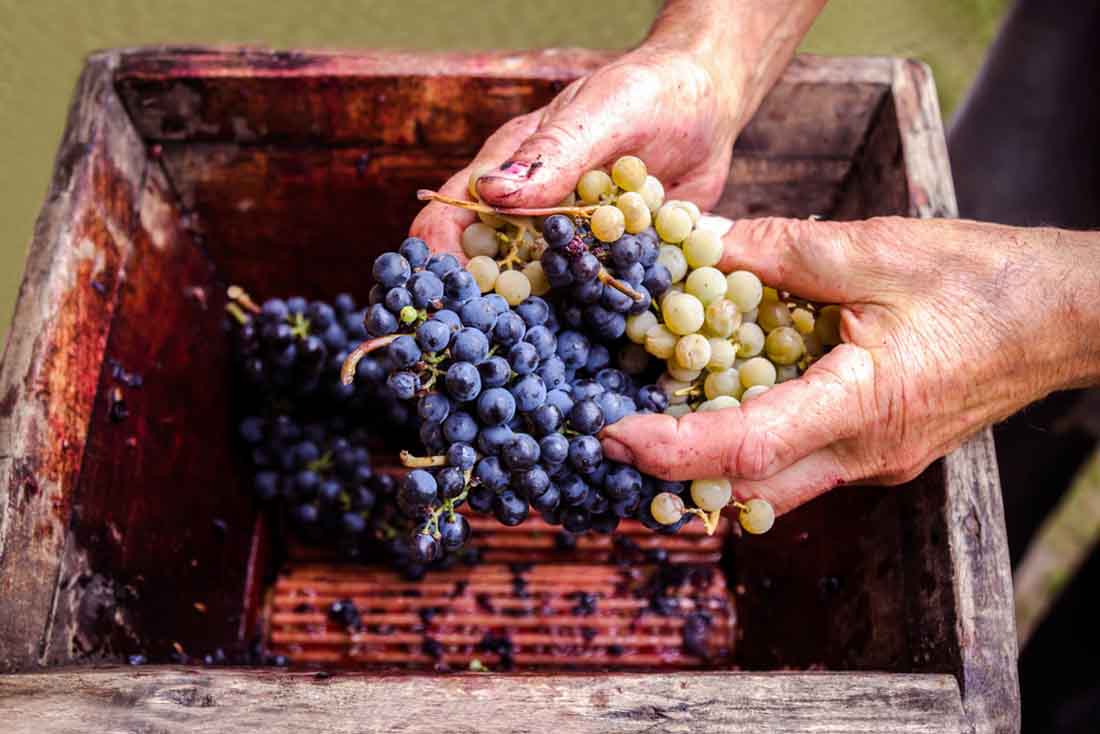
22 May Understanding What “Wine Must” Is
It’s rare to find a wine lover that doesn’t like red wine. These wines are flavourful, have robust textures and amazing aromas and colouring. The process of making red wine is quite complicated, and several stages are involved in it. Many people wonder where reds get their stunning hues from. Of course, the grape has a role to play, but were you aware that red wines can also be used in white winemaking?
As mentioned, there are many stages in the winemaking process, and here we are going to talk about the first step – obtaining “wine must“. It is this which lends the beverage its unique flavours and colours.
What is Wine Must?
It is the first step in making red wine after the grapes have all been harvested from the vine. The term “must” is derived from the Latin word vinum mustum, which essentially means ‘young wine’. This must contain not just the grape juice but pomace (solids from the skins, stems and seeds). The grapes are then pressed to release their juice. Because the grapes are pressed whole, the soupy mixture of stems, skins, and seeds is called, must.
Whole Cluster Pressing
If the winemaker chooses to keep the stems and seeds in the must, the wines will not be put through a destemmer. Instead, they press and ferment the entire bunches of grapes. This method is called whole bunch pressing. Since the must has grape stems that are very rich in tannins the final product will also have a hanger tannin content.
The winemaker may also choose to use a combination of destemmed and whole cluster and or they may opt for 100% whole cluster pressing. If the grape stems are green and young they would add green, herbal and vegetal notes to the wines. Ripe stems add spicier and mellow flavours to the wines being produced.
Vintners can press either single grape varieties or even blends. That depends on the type or style of wine they’re making. The duration for which they let the must sit will determine the colour and flavour characteristics of the wine. Initial fermentation can start in the must from yeast that’s present on the skins. However, it’s also determined by the duration for which the must is allowed to sit.
Wine Must Maceration
The must will then go through a fermentation process and be turned into wine. This thick opaque mixture can vary in colour from light shades of brown to deep purple depending on the varietal of grapes being pressed. How winemakers manage the must will also determine many of the wine’s final characteristics including; colour, tannin levels and acidity. It’s also where red wines get their tannins and deep colour. The lack of maceration makes white wines almost tannin-free and so light in colour.
There are several different types of wine must maceration processes. Carbonic maceration, extended maceration, and cold soak are the three most common ones. Maceration might take place either before or during the fermentation process. The cold soak is done before yeast fermentation; extended maceration happens during primary fermentation, but it may be allowed to continue right through the fermentation period.
This process starts as soon as the grape skins become ruptured. It’s when the juices are released from the grapes, and it comes in contact with the stems and the grape skins exteriors. To end the maceration, the producers remove the stems, skins, and seeds, from the must. Not all grape varietals benefit from maceration.
Mostly, Bordeaux style varietals such as Merlot, Cabernet Franc, Petit Verdot and Cabernet Sauvignon, can benefit from this extended process. Many other varietals might just be too delicate and can quickly become over-extracted, which will affect the flavour and quality of the final product.
Custom Wine Cellars For your Wines
Regardless of the types of red wines or white wines you prefer, they need the right storage option. Custom wine cellars are built to hold all your precious wines and have the right temperature and humidity levels which helps to maintain the quality and flavouring of the wines.
To find out about how Signature Cellars can help you design and construct a wine cellar that can provide the perfect environment for your wines, while adding value to your home, call us on 1300 570 636 or email info@signaturecellars.com.au. Our experts will respond soon, to discuss your customised wine cellar project requirements.
Thanks for reading,
Neil Smallman
Signature Cellars
1300 570 636




No Comments